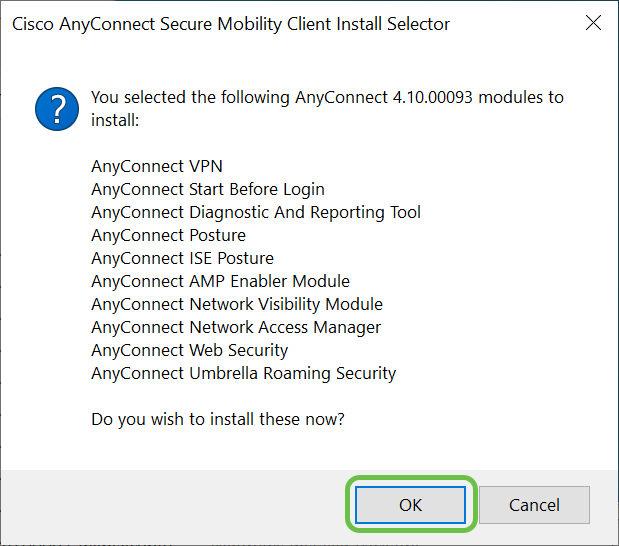Macs 10.8 and later; If you need downloads for other versions, please see Steve's links below. Cisco AnyConnect VPN clients; Steve Grandi, 01/08/18. 1) Introduction. At NOAO-Tucson, we use the Cisco AnyConnect system for remote access to our network via individual VPN tunnels. Legacy SCEP: The AnyConnect client communicates with the CA directly to enroll and obtain a certificate. The CA must be accessible to the AnyConnect client, not the ASA, through an established VPN tunnel or directly on the same network the client is on. Note: Cisco no longer supports AnyConnect releases for Windows XP. Windows Vista is not supported on Cisco AnyConnect Secure Mobility Client 4.0. Mobile: Apple - iPhone, iPad: Uninstall older versions if necessary, and install the latest available Cisco AnyConnect Secure Mobility Client app from the App Store.
Table of Contents
Some USC online-based services require access through on-campus USC Secure Wireless or a wired network connection. USC offers a Virtual Private Network (VPN) connection to provide secure remote access to these services when you are off-campus. When off-campus, you must use the Cisco AnyConnect VPN client to access internal USC systems handling confidential or sensitive data, such as Student Information System (SIS), and file servers for specific schools and departments. The Cisco AnyConnect Secure Mobility client is a web-based VPN client that does not require user configuration.
This webpage provides instructions on how to install and connect to the Cisco AnyConnect Secure Mobility client for Windows 10 operating systems, including both 32- and 64-bit versions.
Login and Download VPN Software
- Connect to your local network.
- Go to https://vpn.usc.edu/.
- On the login screen, enter your USC NetID and Password.
- Click Login.
- After you have logged in, click AnyConnect on the left.

- In the middle of the screen, click Start AnyConnect.
- On the following Download & Install screen, click the Download for Windows button. You may be prompted to save the file, or it may automatically download to your Downloads folder.
Install AnyConnect VPN Client
- Search for the downloaded file on your computer and double-click it.
- You may see the file in the bottom left-hand corner of your screen.
- If you do not see it there, look in your Downloads folder.
- A Cisco AnyConnect Secure Mobility Client Setup pop-up window appears. Click Next. This will initiate the installation.
- On the End User License Agreement window, select I accept the terms in the License Agreement.
- Then click Next.
- Click Install. The installation will begin.
- If prompted to allow the installation, click Yes.
- If prompted, enter your computer’s Admin ID and password. This is the ID and password you use to log into the computer.
- When the installation is complete, click Finish.
Connect with AnyConnect VPN
- Search for the Cisco AnyConnect Secure Mobility Client app on your desktop (Type “Cisco AnyConnect” in your computer search bar OR select the Windows Start button and search in the menu items).
- Click to open the application.
- In the VPN pop-up window, enter: vpn.usc.edu
- Then click Connect.
- On the Welcome screen enter your USC NetID and Password.
- Click Sign in.
- On the Please verify your identity screen, click on Send Me a Push, Call Me, or Enter a Passcode to complete the Duo Two-Factor Authentication (2FA) process.
- You are now connected to the USC network through the Cisco AnyConnect VPN client.

Getting Help
If you need help installing or connecting to your Cisco AnyConnect Secure Mobility client, contact the ITS Customer Support Center.
The simplest and preferred VPN client to use is BU Cisco AnyConnect Client. It is web-based with no installation or configuration requirements. Please click on the following link to begin using BU-VPN. If using Mac OS X 10.6 (Snow Leopard) or newer, Cisco’s VPN client comes built-in to this version of the OS. Please click for instructions on this page.
Note: If the web-based installation is unsuccessful, you will be prompted to download and install the VPN client manually.
Cisco Anyconnect Vpn Client 10.8 Free
- After the installation is complete, you should restart your computer.
- Ensure that you have an active network connection in order for the VPN client to connect.
- Launch the Cisco AnyConnect Client.
Mac OS X (10.12 and higher) | Windows (10, 8.1, 8, 7) |
Cisco Anyconnect Vpn Client 10.8 Windows 10
- In the Connect field enter: vpn.bu.edu
- Click Connect. You will be prompted for your BU login name and BU Kerberos password.